Should You Worry About Roof Snow Removal?
In the Chesapeake region, we may not get pounded with one snow storm after another. But, when we do experience a blizzard, it can be a doozie. For many homeowners, they may be wondering if roof snow removal is necessary? The answer can be a little complicated. Furthermore, it is dependant upon many factors including whether or not you have adequately prepared, the age of your roof, and the condition of your home’s structure.
The Benefits of Leaving Snow on Your Roof
Believe it or not, there may be benefits if you have snow on your roof. It adds an insulating factor and can positively affect your energy costs. Additionally, it can protect your home from outside weather. Lastly, it can indicate your home is properly insulated from the inside. How? Is the snow sticking around on your roof a little longer than the other houses in your neighborhood? That is a good indication your home has the correct amount of insulation.
Considerations of Roof Snow Removal
The best advice we can offer here is to monitor the accumulating snow on your roof carefully. If your roof is structurally sound, on average, it should be able to hold about 20 pounds of pressure per square foot. How many inches your roof can handle, however, depends on the type of snow. Heavy wet snow may cause issues, whereas light powdery snow may not. Another concern could be back to back storms.
Here are other considerations:
- Roofing material used — Metal roofs tend to shed snow and ice better, where shingled roofs tend to hold the snow.
- Pitch of your roof — Flatter roofs (less than 3/12 pitch) tend to hold more snow and therefore moisture, creating ice dams faster.
- Fluctuations in temperature — If you have frequent and extreme weather changes, it could create issues. For example, if you have significant snow, then rain, then a quick freeze over, causing somewhat dangerous weight on your roof.
- Age of your home — Older homes may not be as structurally sound as new homes, therefore a reduced snow load. Further, they may have a higher potential for wood rot and thermal issues.
Signs of Extreme Snow Load
- Water spots on your ceiling from excessive moisture that has nowhere to escape.
- Cracks in the drywall caused by excessive weight bearing down causing walls to warp slightly.
Along with seeing water spots on your ceiling, it is essential to watch for cracks in your drywall. Drywall tends to crack from the changing structure it is attached to. If your roof is pushing down on your home’s framing, it may be causing warping of your walls. Hence, manifesting as cracks in your walls. Be sure to have an inspector review these cracks in your home for other potential problems that may or may not be related to your roof’s snow load.
Leave It to the Professionals
Should you suspect your roof is experiencing extreme snow load, we always advise you to call a professional for an evaluation. Raking snow off of a


